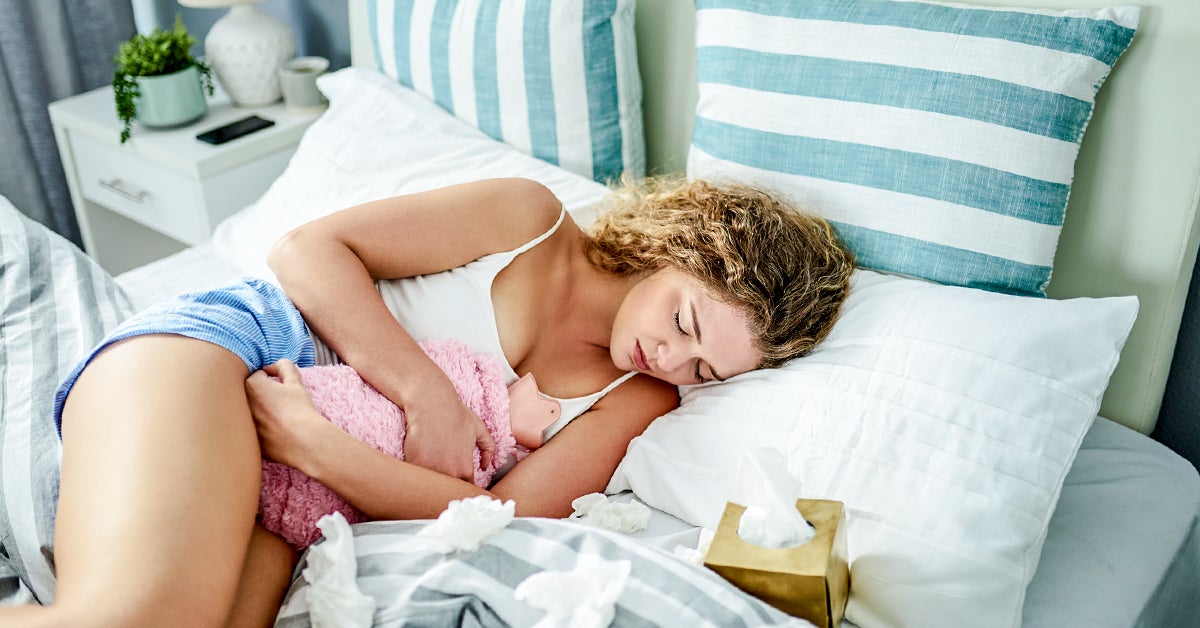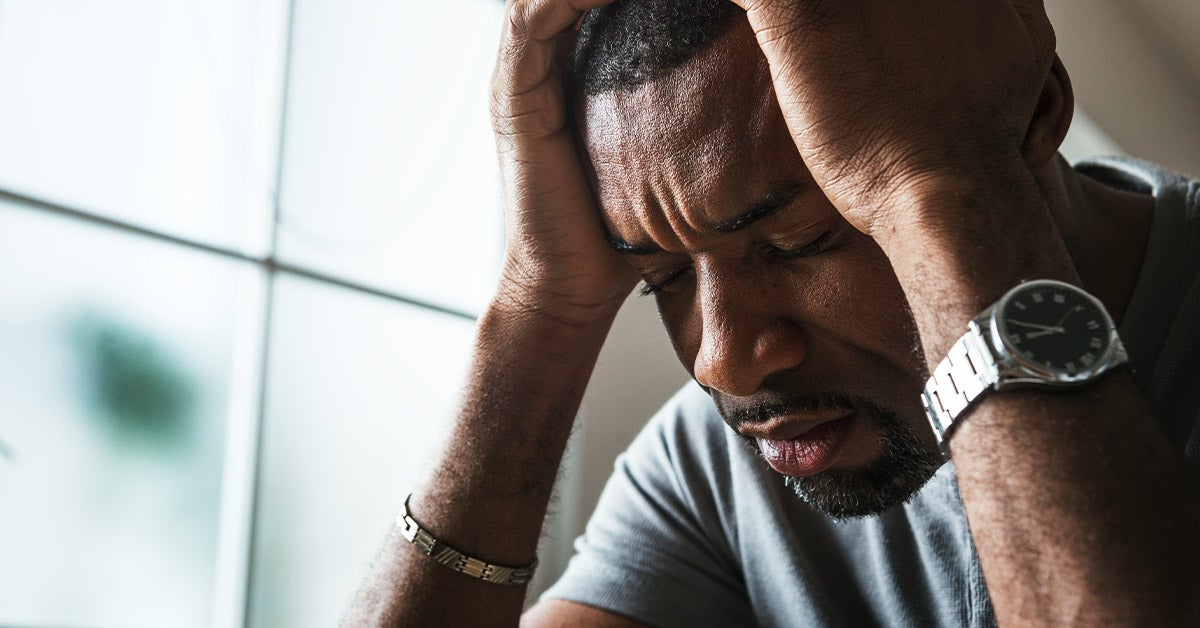Yeast Infection Before Your Period: Causes, Treatment, and Prevention
Healthline and our partners may receive a portion of revenues if you make a purchase using a link on this page.
For many women, periods are bothersome enough with the cramps, mood swings, bloating, and other PMS symptoms. But they can become more unpleasant when you get a vaginal yeast infection on top of it all.
Vaginal yeast infections, a condition also called vaginal candidiasis, are most likely to occur the week before your period starts.
Vaginal yeast infections are fungal infections that can cause irritation in and around the vagina. They can also lead to pain during sex and urination. A yeast infection can cause extra discomfort when it happens shortly before your period.
Here's more information on why yeast infections tend to happen before your period, what you can do to prevent them, and how you can treat them.
A healthy vagina contains a balanced mix of yeast and bacteria. The same hormonal changes that trigger menstruation can also trigger an imbalance of the yeasts and bacteria that naturally live in the vagina.
An overgrowth of a type of fungus called Candida can lead to a yeast infection. There are several strains of Candida that can cause a yeast infection. The most common strain is called Candida albicans.
Fluctuating hormones and the resulting imbalance of vaginal flora means that there may be a risk of a yeast infection every month. In one very small, dated study, more than half of all women who developed an imbalance of their vaginal yeast and bacteria found that it began at the start of their periods.
According to the authors of a 2017 study that included 7 countries, an average of 39 percent of women have a yeast infection at any time during a given year, and an average of 23 percent of women have more than one yeast infection a year.
Other causes of an overgrowth of Candida include:
- a weakened immune system
- diabetes that's not well controlled
- taking oral contraceptives that increase the body's estrogen levels
- use of antibiotics
- pregnancy
Some general signs and symptoms of a yeast infection include:
- burning or stinging during urination or sex
- itchiness and irritation in the vagina and vulva
- rash on and inside the vagina
- pain and soreness of the vagina
- swelling of the vulva
- vaginal discharge that is thick, white, and looks like cottage cheese, with no odor; or is very watery
You could have or develop a much more serious yeast infection if you:
- have diabetes that's not well controlled
- have more than four yeast infections each year
- have a weakened immune system
- have symptoms that are very severe, causing extreme swelling, itching and redness that result in cracks, tears, and sores
- have a yeast infection that's caused by an unusual type of fungus
It may be time to see a doctor if:
- your symptoms don't get better after treatment with over-the-counter anti-fungal vaginal creams or suppositories
- you have extreme itching, swelling, or redness
- you are in pain
- you're not sure whether or not you have a yeast infection
To test for a yeast infection, your doctor will start by asking you questions about your medical history. Because recurring yeast infections are common, your doctor will likely want to know about any previous yeast infections you've had. Your physician may also ask you whether you've had any sexually transmitted diseases in the past.
Your doctor is likely to perform a pelvic exam. This will involve examining both the inside and outside of your vagina to look for symptoms.
Lastly, your doctor may take a swab of your vaginal fluids for testing. They will use the sample to try and identify the exact strain of fungus causing the infection. This may help your doctor to create a treatment plan that's most effective for your yeast infection.
The treatment your doctor prescribes depends on the severity of your infection as well as how often you tend to get them. Yeast infections are most commonly treated with:
- a one-time dose of fluconazole (Diflucan), a triazole antifungal medication that stops Candida fungus from multiplying; pregnant women should not take fluconazole
- a short course of antifungal medication inserted into the vagina for three to seven days
- an over-the-counter cream, ointment, tablet or suppository medication like miconazole (Monistat 3) or terconazole; these are most effective for mild yeast infections
For recurring or severe yeast infections, your doctor may prescribe the following treatments:
- azole resident therapy, which involves inserting a boric acid capsule into your vagina (not to be taken orally); it's used to treat yeast infections that do not respond to other antifungal medications
- a longer course of antifungal medication that involves inserting the medication into your vagina daily for up to two weeks, and then once a week for six months
- two single doses of fluconazole, taken three days apart
Be aware that if you use a cream or suppository to treat your yeast infection, you cannot depend on a condom or diaphragm for birth control. The oils in some medications can weaken latex, which is the material most commonly used in these contraceptive devices.
There are some simple home remedies that, when used in combination with your doctor's treatment, may help to speed up your recovery.
Plain Greek yogurt
Research suggests that probiotics, like yogurt, are effective at preventing Candida growth in the vagina. This, in turn, may help stave off yeast infections. Try to eat at least one 4- to 6-ounce serving of plain, unflavored Greek yogurt a day for best results.
Probiotic suppositories and supplements
A regimen of oral probiotics that contain strains of the lactobacillus acidophilus bacteria, may help restore the balance of bacteria and yeast in your body. It can take about 10 days to notice results with an oral probiotic supplement. Some women use probiotic supplements as a vaginal suppository for faster results.
Shop for probiotic supplements and probiotic suppositories online.
Coconut oil
There's some evidence that coconut oil may help reduce levels of Candida albicans in the vagina. Try applying a small amount of pure, organic coconut oil to the affected area.
Shop for coconut oil online.
Tea tree oil
Tea tree oil is known to kill fungi, viruses, and bacteria. According to a 2015 study, vaginal suppositories that contain tea tree oil may help treat yeast infections.
Pure tea tree oil is strong and can irritate your genitals. Make sure you dilute the oil with jojoba or coconut oil if you want to use it as a vaginal suppository. Use tea tree oil sparingly, no more than once every few weeks.
Shop for tea tree oil online.
You can help prevent yeast infections by practicing good vaginal hygiene. Candida grows best in warm, moist environments with lots of bacteria. Here are some ways to prevent these conditions:
- Avoid very tight-fitting clothing, such as pantyhose or skinny jeans, which can increase the amount of body heat and moisture around your genitals.
- Avoid douching or using scented tampons, as well as feminine sprays, powders, and perfumes that can disrupt the normal balance of organisms in your vagina.
- Change your pads and tampons often.
- Keep your vaginal area clean by washing with a mild, unscented soap and water.
- Take off your swimsuit immediately after getting wet so your vaginal area can air out.
- Wear clean, cotton underwear.
- Wipe from front to back to help prevent the spread of bacteria from your anus to your vagina and urinary tract.
Yeast infections are a common issue for many women right before their period. Although you can't control the hormonal changes that can trigger a yeast imbalance, there are steps you can take to reduce your risk of getting a yeast infection.
These infections are usually not serious and are relatively easy to treat with over-the-counter medications and home remedies. Follow up with your doctor if your symptoms don't get better, or if your symptoms start to interfere with your day-to-day life.
-
 6 interesting genetic traits that children will inherit from their parents
6 interesting genetic traits that children will inherit from their parents
-
 7 effects of asparagus on child development
7 effects of asparagus on child development
-
 Does cutting blood hair for babies bring good luck?
Does cutting blood hair for babies bring good luck?
-
 The more babies eat, the higher the height they develop, especially the second kind
The more babies eat, the higher the height they develop, especially the second kind
-
 Children with chicken pox should eat to quickly recover from the disease, without leaving a deep scar?
Children with chicken pox should eat to quickly recover from the disease, without leaving a deep scar?
-
 The more food is cooked, the better it can be for health, especially the second type
The more food is cooked, the better it can be for health, especially the second type
-
 Cramps, No Period, and White Discharge: Could You Be Pregnant?
Cramps, No Period, and White Discharge: Could You Be Pregnant?
-
 Is It Safe to Eat Beef Jerky If Pregnant? Plus, What to Eat & Avoid
Is It Safe to Eat Beef Jerky If Pregnant? Plus, What to Eat & Avoid
-
 Prince Albert Piercing: 3 Types, Sexual Benefits, Risks, Care, More
Prince Albert Piercing: 3 Types, Sexual Benefits, Risks, Care, More
-
 Best Core Exercises: Top 10 Moves, from Beginner to Advanced
Best Core Exercises: Top 10 Moves, from Beginner to Advanced
-
 Quadratus Lumborum Stretch: 10 Stretches for the Lower Back
Quadratus Lumborum Stretch: 10 Stretches for the Lower Back
-
 Why Am I So Emotional? 15 Reasons and When to Seek Help
Why Am I So Emotional? 15 Reasons and When to Seek Help































